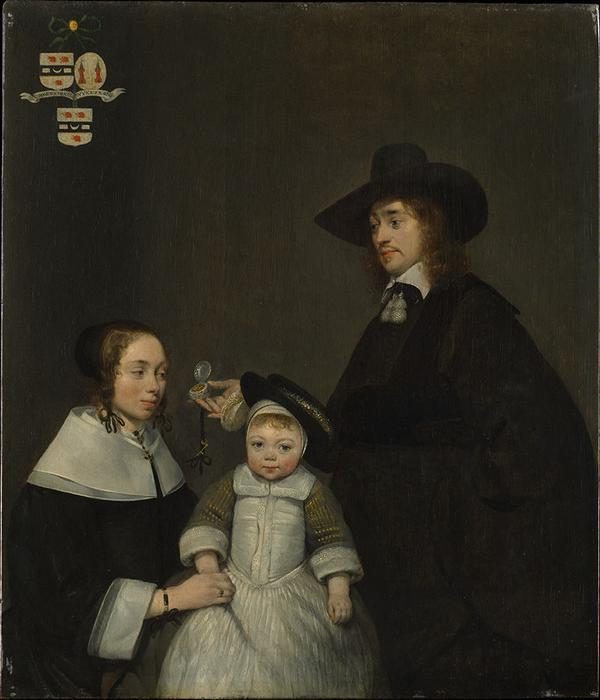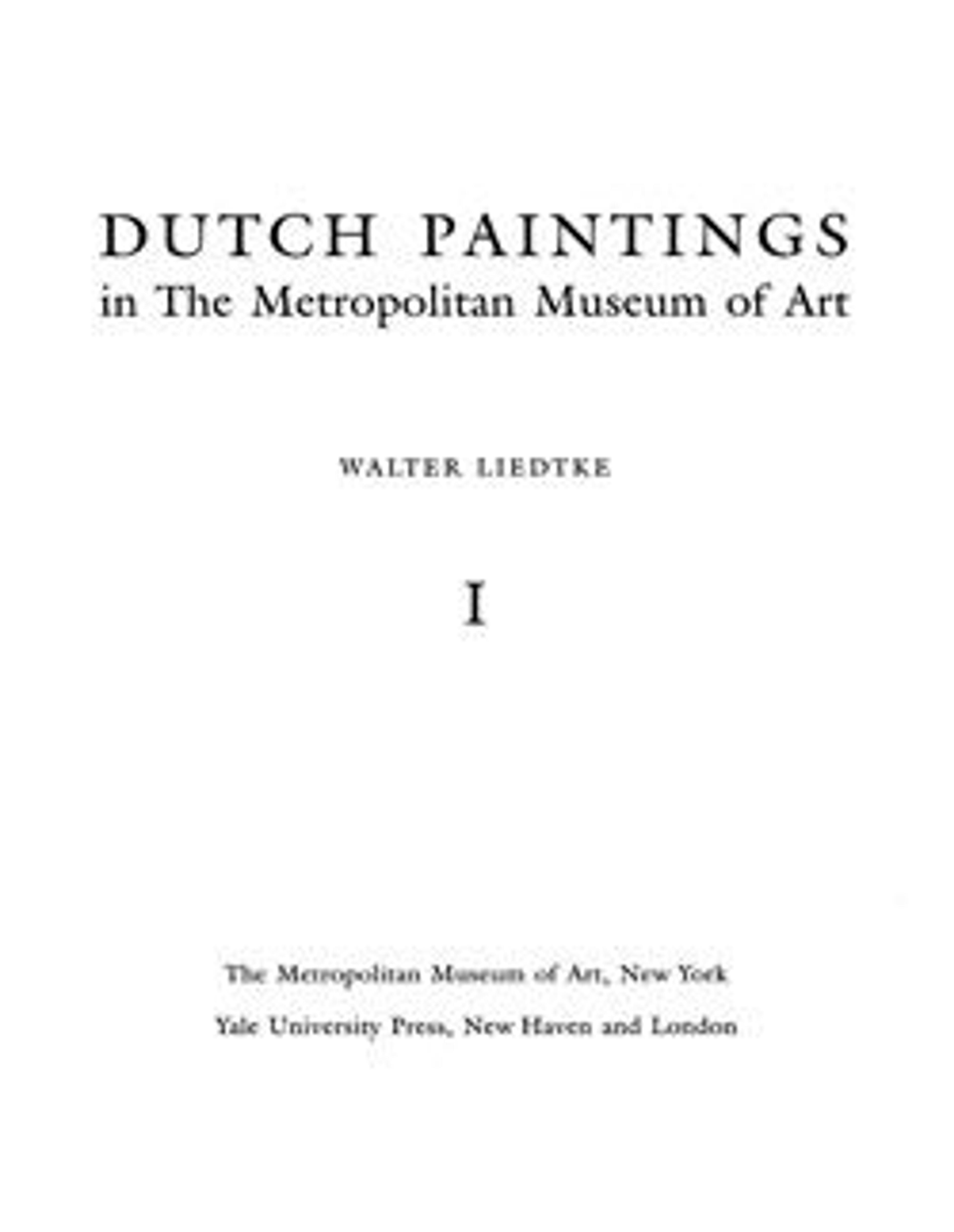The Van Moerkerken Family
In this portrait of his cousin Hartogh van Moerkerken with his wife, Sibylla, and their son, Ter Borch broke with convention by depicting the wife on the left—traditionally the superior, and male—side of the panel. The composition is asymmetrical, lopsided, and dynamic, and the young husband’s gesture of showing a pocket watch to his wife gives the portrait an element of storytelling. This emotionally convincing depiction of a nuclear family signals a break with the dynastic imagery of previous generations, although an older tradition persists in the three coats of arms clustered in the upper left-hand corner.
Artwork Details
- Title: The Van Moerkerken Family
- Artist: Gerard ter Borch the Younger (Dutch, Zwolle 1617–1681 Deventer)
- Date: ca. 1653–54
- Medium: Oil on wood
- Dimensions: 16 1/4 x 14 in. (41.3 x 35.6 cm)
- Classification: Paintings
- Credit Line: The Jack and Belle Linsky Collection, 1982
- Object Number: 1982.60.30
- Curatorial Department: European Paintings
Audio

5243. Gerard ter Borch the Younger, The Van Moerkerken Family
ADAM EAKER: One of the things I love about this painting is that it shows us a very recognizably affectionate family, something you don’t always see in seventeenth-century depictions. The young mother who’s holding her child’s hand. The father who is trying to draw his wife’s attention to this expensive pocket watch and, at the same time, their coats of arms in the upper-left-hand corner. A much more ancient, archaic way of representing individuals.
NARRATOR: Along with the fashionable black clothing, a holdover from Spanish rule, Ter Borch uses the watch to announce social status. At the same time, the watch is also a reminder of mortality. These two ideas are also embodied in the star of the show: the first-born son.
ADAM EAKER: Clearly the spotlight here is on this chubby-cheeked young boy.
NARRATOR: Ter Borch positions the wife on the left, in the place of honor, acknowledging her elevated status as the mother of a surviving male heir.
ADAM EAKER: According to traditional hierarchies, women were always depicted on the right side of a painting when they were shown with their husband. Ter Borch has really upended those traditional hierarchies.
NARRATOR: The tender image is all the more poignant knowing that the father, the artist’s cousin, outlived both his first wife and his son.
More Artwork
Research Resources
The Met provides unparalleled resources for research and welcomes an international community of students and scholars. The Met's Open Access API is where creators and researchers can connect to the The Met collection. Open Access data and public domain images are available for unrestricted commercial and noncommercial use without permission or fee.
To request images under copyright and other restrictions, please use this Image Request form.
Feedback
We continue to research and examine historical and cultural context for objects in The Met collection. If you have comments or questions about this object record, please contact us using the form below. The Museum looks forward to receiving your comments.
